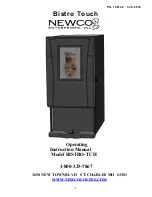
Table 3-1: 4WPB100/4WPB1K connections to Campbell Scientific data loggers
Function
Label/Wire
GRANITE
analog
ue
input
module
GRANITE 6,
CR6
CR3000,
CR1000X,
CR800, CR850,
CR1000
CR9000X
Excitation
Black wire
X1
U5
VX1
Excitation 1
V1 high
H
1H
U1
1H
1H
V1 low
L
1L
U2
1L
1L
Ground
G
⏚
⏚
⏚
⏚
1
The
GRANITE
9
and
GRANITE
10
do
not
directly
make
analog
ue
measurements.
Instead,
they
use
analog
ue
input
modules
such
as
the
VOLT
108
or
VOLT
116.
When
making
a
half-bridge
measurement,
the
terminal
input
module
is
connected
to
the
analog
ue
input
module,
which
is
then
connected
to
the
GRANITE
9
or
GRANITE
10.
4. Programming examples
The following examples show the two instructions necessary to 1) make the measurement and 2)
calculate the temperature. The result of the half bridge measurement as shown is R
s
/R
0
, the input
required for the PRT algorithm to calculate temperature.
If using a calibrated sensor, the exact measurement of R
0
will be known. Use this value to
increase the accuracy of the
PRTCalc()
instruction by inserting the following equation
between the
BrHalf4W()
and
PRTCalc()
instructions in the example programs.
Rs_R0 = Rs_R0*100/R0
where R0 is the sensor resistance at 0 °C
The following examples are for a 100 Ω PRT and 4WPB100. The excitation voltages used were
chosen with the assumption that the temperature would not exceed 50 °C. Calculation of
optimum excitation voltage is discussed in
(p. 9). Using the 4WPB1K allows for
a higher excitation voltage.
4WPB100, 4WPB1K PRT Bridge Terminal Input Modules
4








































